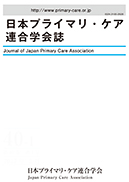Volume 42, Issue 3
Displaying 1-9 of 9 articles from this issue
- |<
- <
- 1
- >
- >|
-
2019Volume 42Issue 3 Pages 133
Published: September 20, 2019
Released on J-STAGE: September 25, 2019
Download PDF (128K)
-
2019Volume 42Issue 3 Pages 134-140
Published: September 20, 2019
Released on J-STAGE: September 25, 2019
Download PDF (538K) -
2019Volume 42Issue 3 Pages 141-149
Published: September 20, 2019
Released on J-STAGE: September 25, 2019
Download PDF (366K) -
2019Volume 42Issue 3 Pages 150-157
Published: September 20, 2019
Released on J-STAGE: September 25, 2019
Download PDF (303K)
-
2019Volume 42Issue 3 Pages 158-161
Published: September 20, 2019
Released on J-STAGE: September 25, 2019
Download PDF (584K) -
2019Volume 42Issue 3 Pages 162-166
Published: September 20, 2019
Released on J-STAGE: September 25, 2019
Download PDF (682K)
-
2019Volume 42Issue 3 Pages 167-173
Published: September 20, 2019
Released on J-STAGE: September 25, 2019
Download PDF (340K) -
2019Volume 42Issue 3 Pages 174-180
Published: September 20, 2019
Released on J-STAGE: September 25, 2019
Download PDF (312K)
-
2019Volume 42Issue 3 Pages 181
Published: September 20, 2019
Released on J-STAGE: September 25, 2019
Download PDF (136K)
- |<
- <
- 1
- >
- >|
